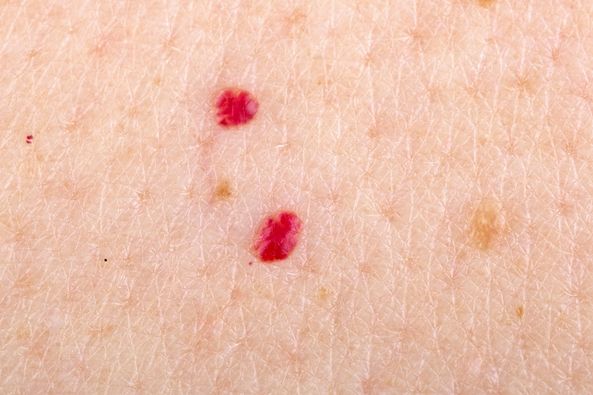If you spot these red dots on your skin, here’s what they mean

If you notice small red spots on your skin, it’s important to understand what they might indicate. Recognizing these marks can be key to maintaining both your skin’s health and your overall well-being.
What are red spots on the skin?
Red spots, often called petechiae or cherry angiomas, can signal a variety of underlying conditions or bodily responses. These tiny, flat marks may appear alone or grouped together and can vary in size.
Why noticing red spots matters
Identifying red spots on your skin is important because they can sometimes be a sign of health issues needing attention. Early detection and proper diagnosis can help ensure timely treatment.
Common Causes of Red Spots on the Skin
Typical reasons include:
- Allergic reactions
- Insect bites
- Skin infections
- Physical trauma or injury
Less frequent causes:
- Blood-related disorders
- Autoimmune conditions
- Side effects of medications
- Nutritional deficiencies
Signs and Symptoms
Appearance and feel
Red spots usually present as tiny, pinpoint marks that may be red, purple, or brown. They can be flat or slightly raised.
Associated sensations
Sometimes these spots itch, hurt, or feel tender, particularly if caused by allergies or inflammation.
Monitoring changes
It’s important to watch for any alterations in size, color, or spread of these spots. Quick changes or new symptoms should prompt medical advice.
Diagnosis and Medical Evaluation
Self-checks
While you can examine your skin yourself, a professional medical evaluation is crucial for accurate diagnosis.
When to see a doctor
Consult a healthcare provider if you notice:
- Red spots that persist or worsen
- Unexplained bruising or bleeding
- Additional symptoms like fever or tiredness
Tests and procedures
Doctors may order blood work, skin biopsies, or imaging tests to uncover the cause of red spots.
Treatment and Care
Home remedies
For mild cases, cold compresses or over-the-counter antihistamines might ease discomfort.
Medical options
Treatment depends on the cause and may include topical creams, oral antibiotics, or laser therapy.
Lifestyle tips
Avoiding allergens, keeping good skin hygiene, and protecting your skin from injury can help prevent recurrence.
Preventing Red Spots
Helpful habits to reduce risk include:
- Limiting sun exposure
- Applying sunscreen regularly
- Eating a balanced diet rich in vitamins
- Managing stress effectively
Regular skin check-ups
Performing routine self-exams and seeing a dermatologist yearly can catch skin changes early.
Additional Causes
- Cherry angiomas: small, bright red bumps from blood vessel overgrowth, usually harmless and common with age.
- Heat rash: occurs when sweat clogs sweat ducts, creating itchy red spots, especially in hot conditions.
- Allergic reactions: caused by foods, substances, medications, or insect bites, leading to redness and itching.
- Folliculitis: inflammation of hair follicles often due to infection, producing red, sometimes pus-filled spots.
- Cellulitis: bacterial skin infection causing redness, swelling, and warmth, often requiring antibiotics.
- Impetigo: contagious bacterial infection common in children, marked by red sores that ooze and crust.
- Vasculitis: blood vessel inflammation linked to autoimmune diseases or infections, causing red spots.
- Hemangiomas: birthmarks from abnormal blood vessel growth, usually harmless but sometimes needing treatment.
In summary, red spots on your skin are often harmless but should not be ignored if accompanied by fever, pain, or rapid changes. Seek medical advice if you experience an increase in number, size, or intensity of spots, or if you feel weak, dizzy, or fatigued.



